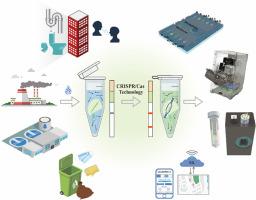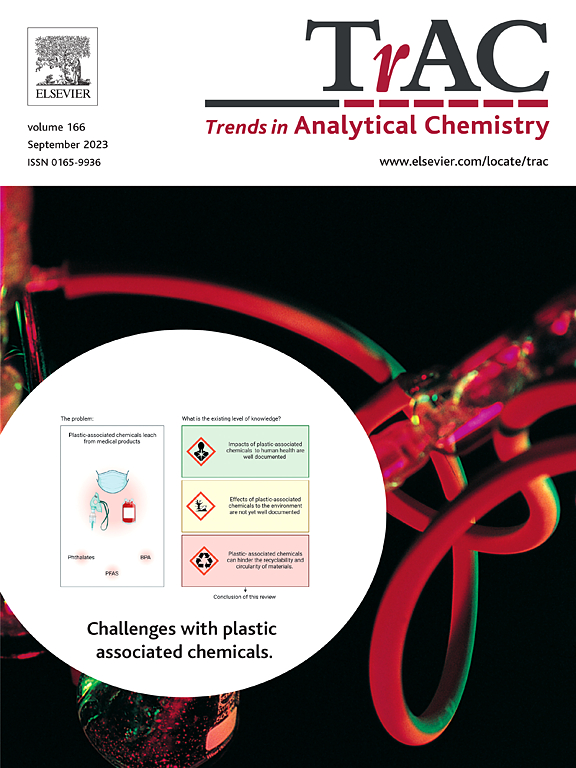Advancements in CRISPR-diagnostic techniques for rapid on-site monitoring of environmental virus
IF 11.8
1区 化学
Q1 CHEMISTRY, ANALYTICAL
引用次数: 0
Abstract
Highly sensitive and rapid environmental surveillance is crucial due to the significant role of various environmental media in transmitting multiple viruses. Specifically, when examining the case of severe acute respiratory syndrome coronavirus 2 (SARS-CoV-2), such surveillance not only provides early warning information for epidemic prevention and control but also enhances our understanding of transmission pathways from an environmental perspective. To achieve effective surveillance, rapid screening techniques are essential to detect and prevent the spread of SARS-CoV-2 in the environment. The integration of isothermal amplification with the CRISPR-Cas system, coupled with advancements in amplification-free technologies, has revolutionized the direct visual detection of environmental viruses at testing sites. However, currently, this emerging technology is mainly utilized in clinical diagnosis due to interdisciplinary barriers and the complexities associated with environmental samples. This review aims to bridge the gap by introducing CRISPR-based molecular diagnosis techniques into practical environmental screening demands. It provides a comprehensive analysis of the environmental surveillance process and explores the development of timely detection technology. Furthermore, the review emphasizes the importance of portable devices, data interpretation, and sharing for real-time and on-site surveillance of environmental viruses, thereby improving preparedness for future potential pandemics.

用于现场快速监测环境病毒的 CRISPR 诊断技术取得进展
由于各种环境介质在传播多种病毒方面发挥着重要作用,因此高灵敏度和快速的环境监测至关重要。特别是在研究严重急性呼吸系统综合症冠状病毒 2(SARS-CoV-2)时,这种监测不仅能为疫情防控提供早期预警信息,还能从环境角度加深我们对传播途径的了解。为实现有效监测,必须采用快速筛查技术来检测和预防 SARS-CoV-2 在环境中的传播。等温扩增与 CRISPR-Cas 系统的整合,再加上免扩增技术的进步,彻底改变了在检测点直接目测环境病毒的方法。然而,由于跨学科障碍和环境样本的复杂性,这项新兴技术目前主要用于临床诊断。本综述旨在将基于 CRISPR 的分子诊断技术引入实际的环境筛查需求中,从而弥补这一差距。它全面分析了环境监测过程,并探讨了及时检测技术的发展。此外,综述还强调了便携式设备、数据解读和共享对于实时和现场监测环境病毒的重要性,从而提高对未来潜在流行病的防范能力。
本文章由计算机程序翻译,如有差异,请以英文原文为准。
求助全文
约1分钟内获得全文
求助全文
来源期刊

Trends in Analytical Chemistry
化学-分析化学
CiteScore
20.00
自引率
4.60%
发文量
257
审稿时长
3.4 months
期刊介绍:
TrAC publishes succinct and critical overviews of recent advancements in analytical chemistry, designed to assist analytical chemists and other users of analytical techniques. These reviews offer excellent, up-to-date, and timely coverage of various topics within analytical chemistry. Encompassing areas such as analytical instrumentation, biomedical analysis, biomolecular analysis, biosensors, chemical analysis, chemometrics, clinical chemistry, drug discovery, environmental analysis and monitoring, food analysis, forensic science, laboratory automation, materials science, metabolomics, pesticide-residue analysis, pharmaceutical analysis, proteomics, surface science, and water analysis and monitoring, these critical reviews provide comprehensive insights for practitioners in the field.
 求助内容:
求助内容: 应助结果提醒方式:
应助结果提醒方式:


